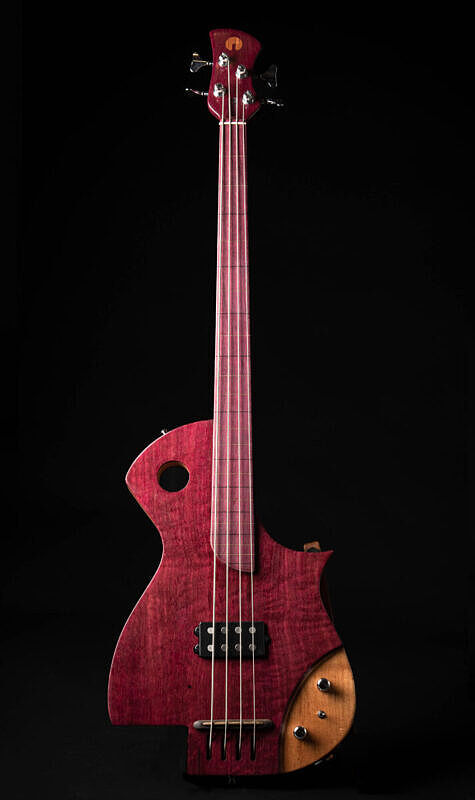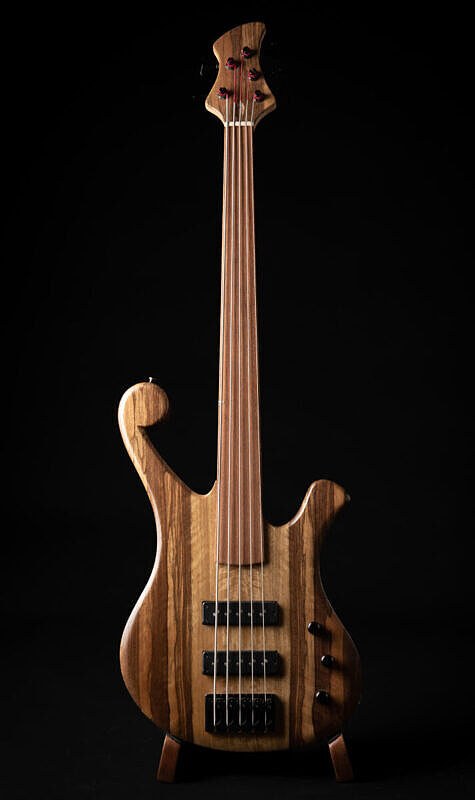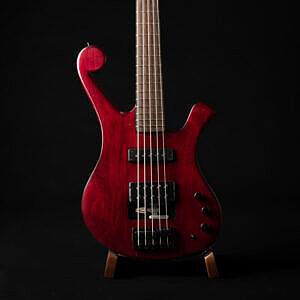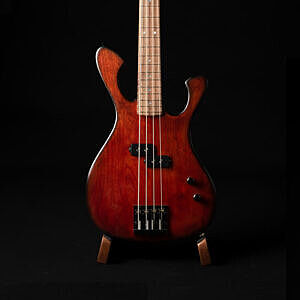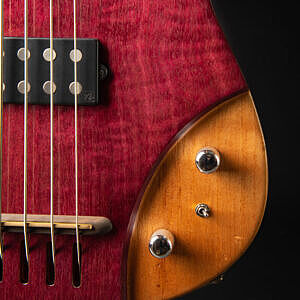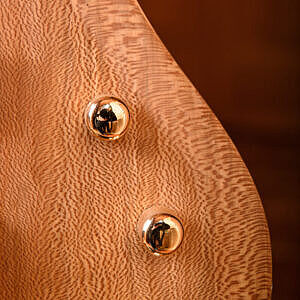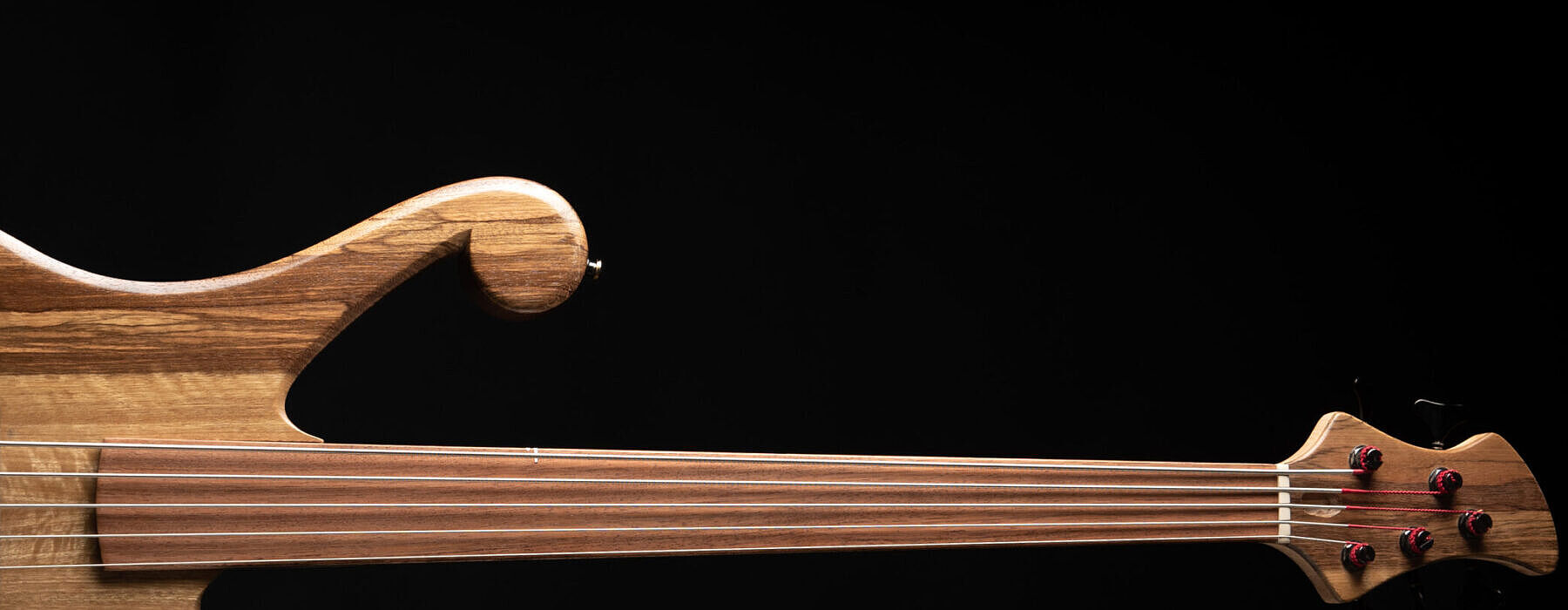
Custom Electric Basses
Low End Tonal Tailoring
Go Big, Go Low
Possum Hall Instruments can design and build you just about anything you might want from an electric bass – solid body or semi-hollow, carve top, extended fret range, fretless, scale length, custom shapes, and 8-string, 10-string, and 12-string basses.
Tell me what you’re looking for in your sound and we can find it together.
Possum Hall Instruments offers a wide range of options on all custom bass designs
- 4, 5, 6, 8, 10, 12 strings
- Choice of scale length – 30″ to 36″
- Fretted or fretless
- Huge selection of fingerboard wood and neck wood combinations
- Custom shaping of the neck to YOUR preference
- Magnetic or piezo pickups, active, passive…
Body Construction
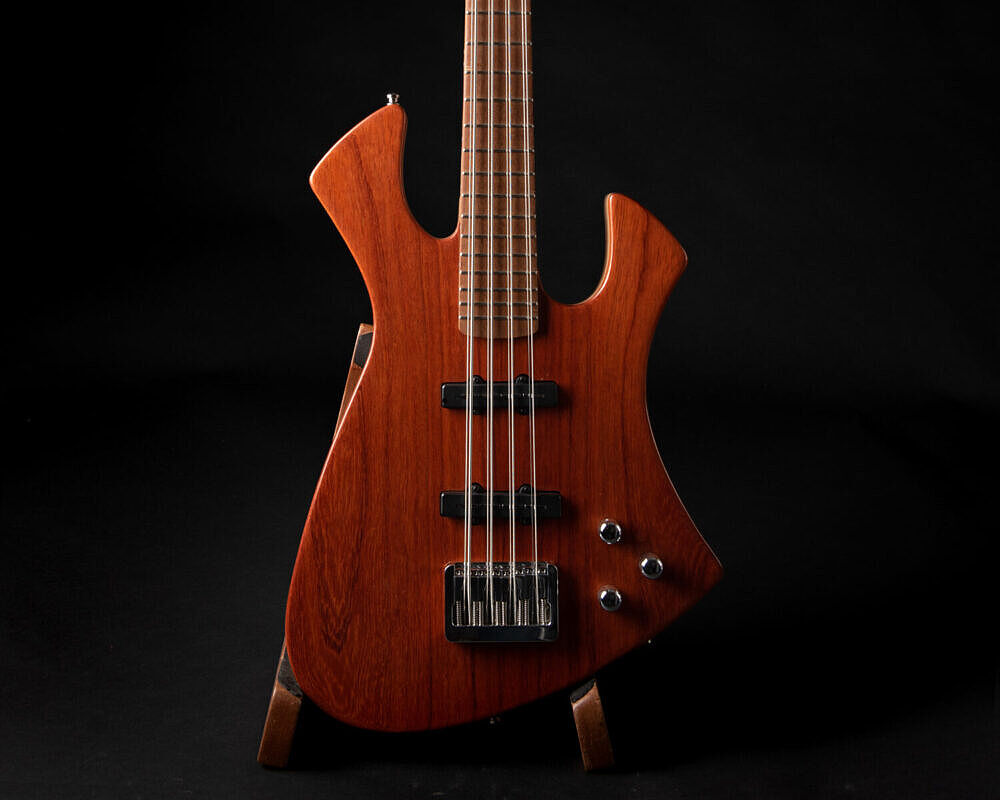
Solid or Semi-Hollow Body
The general standard in electric bass design, a solid body bass instrument is considered to offer maximal sustain, as compared to a semi-hollow bass design. This is a function of physics and acoustic coupling specifically in regard to low frequency energy. However, achieving maximal sustain on a bass guitar is not always the most important target to aim for. By modifying the weight of (and introducing air spaces within) a low register instrument, we can achieve beneficial musical results.
For an electric bass, this weight reduction, chambering, and porting can make a significant difference in the way the low end “blooms”, just as an acoustic upright bass has a short decay time but a strong fundamental note.
A wide variety of chambering and semi-hollow body approaches can tailor the sound of your instrument in sublime ways.
Top and Body Woods
The Wood Always Makes a Difference
Particularly when it comes to electric basses (rather than their tenor counterpart, the guitar), the wood choices have subjectively a more pronounced effect on the sound of the instrument, due to the low frequency energy that is generated by the vibrating strings and how that behaves within the carrier system (neck and body).
Solid body instruments are generally considered the go-to for maximal sustain of a plucked string instrument, like a bass guitar. Sustain is generated by rigidity, and one easy way to achieve rigidity is with mass in the form of a solid block of wood. This, however, is not the only way to achieve rigidity, and when it comes to bass instruments, sound holes, weight reduction, and resonant spaces can significantly alter the “voice” of an instrument.
“Tone” begins with a vibrating string coupled to a carrier system, the body and neck assembly of a guitar. As the string is driven to action (plucking), the wood and the string talk back and forth, sharing and dissipating energy over time. The rate of energy exchange and dissipation radically affect the tone that is produced by the vibration of the string. Low frequency instruments produce more vibrational energy by the nature that their strings are significantly thicker as they get lower in pitch, leading to more mass per string.
The “voice” of a bass guitar often has a great deal to do with the difference in decay time between the lower and higher harmonics. Wood pairings – body/top, neck/fingerboard – are a huge factor in the voice of a bass guitar, particularly fretless where there is even more player interaction with the wood itself.
Furthermore, bass guitars are generally played at “lower gain settings” than electric guitars, which may use saturation, overdrive, and distortion in their sound more often. This arguably suggests that the wood may have more dynamic range within which to be heard affecting the overall tone of the instrument.
